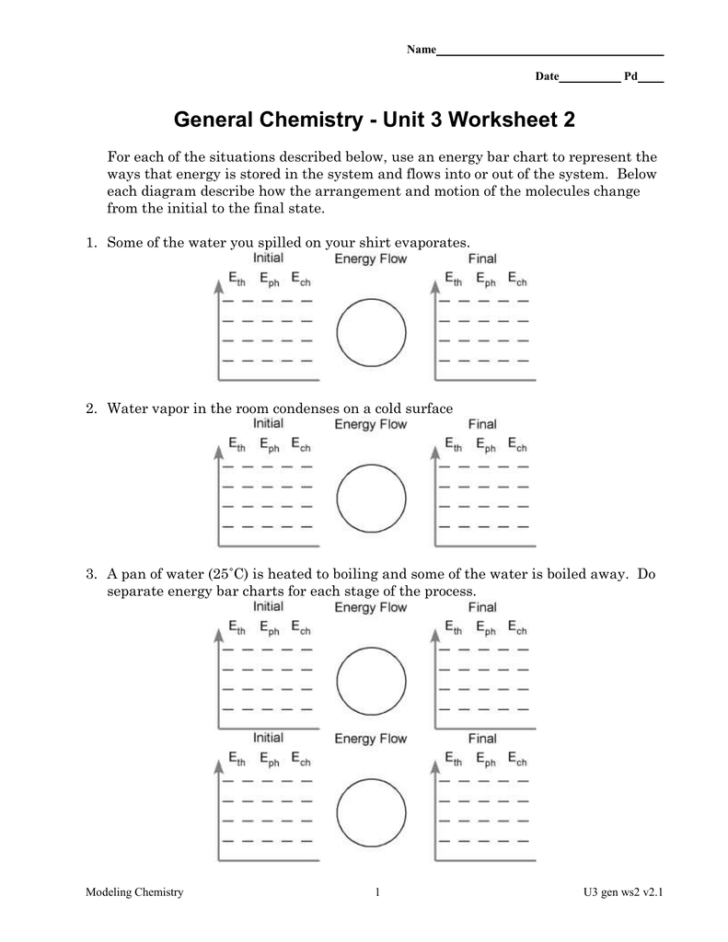Ohm's Law Practice Worksheet: Expert Answers and Guide

Ohm's Law is a foundational principle in the study of electricity, encapsulating the relationship between voltage, current, and resistance within an electrical circuit. For students, hobbyists, or professionals in the electronics field, understanding and applying Ohm's Law is pivotal for mastering electrical circuits, designing systems, and troubleshooting. This post serves as an expert guide, providing worksheet solutions, explanations, and insights into Ohm's Law. We'll dive into theory, practical applications, and how to approach common problems encountered when working with electrical circuits.
Understanding Ohm’s Law

Ohm’s Law states that:
V = I * R
- V represents Voltage (measured in Volts, V)
- I stands for Current (measured in Amperes, A)
- R denotes Resistance (measured in Ohms, Ω)
This equation expresses that the voltage applied across a conductor or resistor is directly proportional to the current flowing through it, with resistance being the constant of proportionality.
How to Use Ohm’s Law

To apply Ohm’s Law effectively, follow these steps:
- Identify Known Values: Determine which values you know from the equation. Typically, you’ll know two and solve for the third.
- Rearrange the Formula: Based on what you need to find, rearrange the formula:
- If you want current (I), the formula becomes I = V / R.
- For voltage (V), it’s V = I * R.
- Resistance ® can be found with R = V / I.
- Plug in Values: Substitute the known values into the rearranged equation.
- Solve: Perform the calculation.
- Verify and Double-Check: Ensure your answer makes sense in context.
Practice Worksheet with Solutions

To reinforce the concept of Ohm’s Law, let’s delve into some typical problems you might encounter:
Problem 1:

If a resistor in a circuit has a resistance of 150 Ohms and the current through it is 0.5 Amperes, what is the voltage across it?
- Given: R = 150 Ω, I = 0.5 A
- We need to find V, so we use V = I * R
- Substitute the values:
| V = 0.5 A * 150 Ω | = 75 V |

Problem 2:

Calculate the resistance of a circuit where the voltage across it is 9V and the current passing through it is 3A.
- Given: V = 9V, I = 3A
- We need to find R, so we rearrange the formula to R = V / I
- Substitute the values:
| R = 9 V / 3 A | = 3 Ω |
⚠️ Note: Always ensure the units are consistent when calculating. Voltage should be in volts (V), current in amperes (A), and resistance in ohms (Ω).
Problem 3:

If a device requires a current of 2 Amperes and has a voltage of 12 Volts, what resistance does it have?
- Given: I = 2 A, V = 12 V
- Find R using R = V / I
- Substitute the values:
| R = 12 V / 2 A | = 6 Ω |
Real-World Applications of Ohm’s Law

Understanding Ohm’s Law has a broad range of applications in:
- Circuit Design: Engineers use Ohm’s Law to determine component values in electronic circuits, ensuring compatibility with power supplies and reducing risks of component failure.
- Troubleshooting: When a circuit malfunctions, technicians might use Ohm’s Law to diagnose whether an issue stems from too high or too low resistance or improper voltage/current flow.
- Energy Distribution: Power engineers calculate voltage drops in transmission lines to optimize energy distribution, minimizing losses.
- Battery Life: In battery-powered devices, Ohm’s Law helps in understanding how long batteries will last under certain loads.
The applications of Ohm's Law extend far beyond these examples, influencing virtually every aspect of electrical engineering, from large-scale power systems to tiny sensor circuits.
In summary, Ohm's Law is not just a theoretical concept; it's the bedrock on which electrical theory and practice stand. From circuit design to troubleshooting, this fundamental law allows for understanding, predicting, and controlling electrical phenomena. Whether you're calculating the voltage drop in a circuit, choosing the right components, or ensuring safe operation of electrical equipment, Ohm's Law is your go-to guide.
What happens if I change the resistance in a circuit?

+
Increasing resistance will decrease the current for a given voltage, according to Ohm’s Law. Conversely, decreasing resistance increases the current. This can impact how much power is used, the voltage drop, and the heat generated in the circuit.
Can Ohm’s Law be used for all types of resistors?

+
Ohm’s Law holds for linear or ohmic resistors where resistance does not change with voltage or current. For non-linear devices like diodes or LEDs, the relationship is more complex, and other models or laws are often used.
Why is it important to learn Ohm’s Law?

+
Ohm’s Law is fundamental to understanding electrical circuits. It allows you to predict how current, voltage, and resistance interact, which is crucial for designing, analyzing, and troubleshooting electronic systems safely and efficiently.

